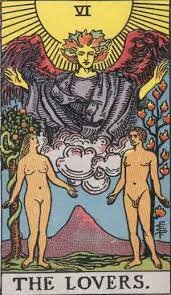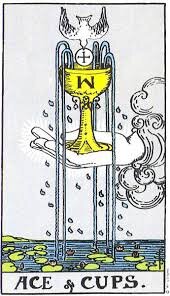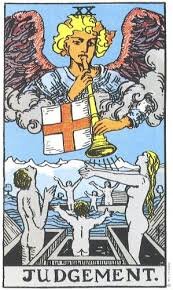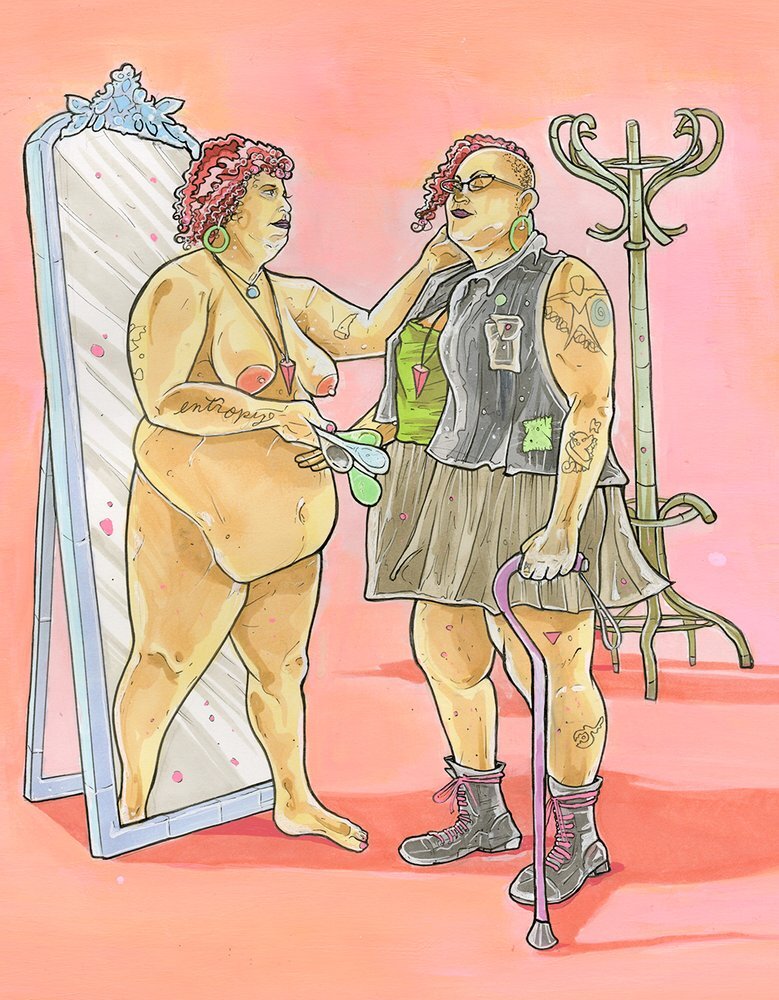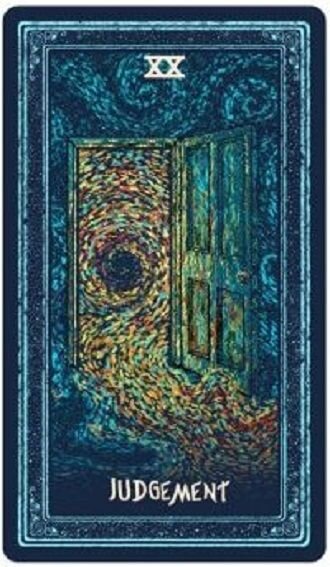The Saints Be Shook | On Tarot & Whether It's "Demonic"
"The Saints" (defined here as): A "churchy" term (see previous definitions) which describes strict adherents to Biblical literalism, the holy / unholy dichotomy, and moral objectivism
One of the questions that I get the most is "So, how do you deal with people who say that the tarot is demonic?"
Most of you know, I grew up in the Black church. It was a charismatic and non-denonimational space that prioritized a version of “holiness” that had a lot of rules. I was raised within a cultural-religious system that believed in the life of spirits: some benevolent, some terrible, some "not to be played with." There were spiritual practices happening in our church that had little to do with mainstream Christianity: the drumming and percussion circles, the rites of passage ceremony, the ring-shouting, the running, the “tarrying”, “falling out under the power” of the Divine, “catching the Spirit”. None of these things were regulated by an institutional Church system, but they were ways that African diasporic beliefs could weave themselves into the dominant framework across time. So… it was what it was (1, 2).
But the stigma around cards still remained.
The "trouble" with tarot is, that for the most part, it is seen as an "unregulated" spiritual practice. It's also laden with some very mysterious history that seems to have its starting point in Italy. It’s been mythologized for solely being able to "tell the future" (spoiler alert: not exactly). And has a card that is quite explicitly called "The Devil".
And so, the saints be spooked.
The saints also be spooked because of a thing called Biblical literalism. There are also passages in the Bible that discuss not going to or practicing divination, sorcery, fortunetelling, etc. and many of these exist in the Old Testament at a time where Israel was undergoing vast periods of change as a nation (e.g. Duet. 18:9-11).
These things can look very convincing when passages are isolated from historical context, taken literally, and stacked up as particular arguments 'against' these methods. Additionally, when you’re most comfortable in a system of literal interpretation, pulling “The Devil” card could potentially feel terrifying!
I believe that much of this goes often unnamed but not unfelt. These tensions are often coded & shorthanded as "demonic", and often, there’s no further exploration of the matter.
But when people want to know if it's "demonic or not", I often say "They're missing the point." Here’s why:
There are realities within realities, as Gloria Anzaldúa suggests (3).
Conversations about divination, especially for "the saints", are complicated because the lists of "off-limit" divinatory forms are also situated alongside a canon & cast of popular characters who also interpreted dreams (Daniel 2:19), casted lots (cleomancy; Jonah 1:7), had mystical visions (Book of Revelations), and argued about whether or not to eat food that was sacrificed to idols (1 Cor. 8).
Then, there is the matter of divinatory practices that Black church spaces might see as 'safer'. For example, bibliomancy, e.g.
"I said, I was going to opened up my Bible and whatever word it fell on was directly for me." - Sister R., during testimony service
There’s also the “gift of prophecy” or “word of wisdom” where the saints might receive a channeled message from the Divine through a preacher, prophet(ess), or another parishioner.
So, again, it gets complex.
Many times, you can tell when someone is genuinely entering the conversation. You can also tell when someone is wanting to validate their beliefs by debating and discrediting. I send the latter on their way.
However, there are things that I typically share with those interested and I would like to offer them to you for consideration:
1. Tarot (tarocchi) cards were popular during the 15th century as game playing cards for royals in Milan, Italy. It's interesting to me that, apart from independently created decks, most decks are released by game company factories (4).
2. Tarot divinatory methods weren't popularized until the 18th century. Most people associate all 'tarot cards' with its most widely used deck, the Rider-Waite-Smith edition, which was released around 1909-1910. Waite, prominent member of the Order of the Golden Dawn & a visionary of this deck, was very familiar with Kabbalah, Catholic Mysticism, astrology, aspects of Greek mythology, and a variety of other beliefs spanning religions & schools of thought. Smith, the artist (a Black woman!), has been said to be a Catholic mystic, which may or may not be true. However, you can see the influence of some of these concepts within the cards' illustrations. (Examples below: Temperance, The Lovers, Judgement, & Ace of Cups, Rider-Waite-Smith decks). Through historical groups, factions, and prominent figures, the core USE of tarot has been debated, and remains so to this day. (5)
In this edition, there are images of communion chalices, phallic-looking staffs, astrological references, and then some. So, as you might imagine, this deck and its images have also been heavily critiqued due to some of the overtly religious imagery and primarily the fact that there are no people of color visually represented within this deck. Now, there are hundreds, if not thousands, of new and re-created decks that reflect the specific imagery, symbolism, and ideas that the artists hold. This has widened the canon of decks & their focal points. For example:
Temperance Card, The Luna Sol Tarot Deck, created by Liminal 11 Publishing Company
The Lovers Card, Next World Tarot, Created by Cristy C. Road
The Strength Card, Modern Witch Tarot by Lisa Sterle
3. Learning to read tarot cards involves skills of intuition, creativity, and storytelling. Currently, it is not typically used for telling fortunes or the future, although the myth is pervasive. Tarot and fortune-telling is a system that some use (thinking specifically here about Roma peoples who have been being systemically marginalized socioculturally. The interesting nature of this, though, is that not only did it seem to add to the spiritual folklore but it provided the people with access to monetary resources through the telling of fortunes).
Currently, readers interpret the cards using different styles, strategies, and methods. (My personal approach is to use discernment and intuition & offering it through a coaching perspective. Other people ask about what a client's 'spirit guides', ancestors, and / or other benevolent spirits are saying through the cards. Still others use astrological parallels to illuminate the meaning of the card. Therefore, it is important to have some understanding of the methods that an individual reader is using. It is equally important not to assume that your fortune will be told or that working with cards immediately equates to channeling spirits. Some say that the tarot works because everyone can identify with the archetypes. Some put more emphasis on the psychological aspects and some, on the spiritual or magical. (see Michelle Tea's Modern Tarot, Melissa Cynova's Kitchen Table Tarot, and Courtney Alexander's Dust II Onyx Guidebook to see varying methods and examples).
4. Perhaps the most important thing that I like to share, however, is that coding unregulated systems of spiritual practice as demonic (& assuming that everyone relates within & to that system) is Christian supremacy. Through my work in spaces that center POC knowledge, mysticism, and activism, I know all too well the dangers of privileging Christianity while demonizing other forms of practice. It is socialization that needs to be deconstructed - ESPECIALLY given the variety of syncretic spiritual systems and divination tools that "the saints" often use without consciously thinking of it as such (6).
Instead of engaging the questions, "Is it 'real'? Is it 'demonic'?" we are presented with a beautiful opportunity to "decolonize reality", that is, to engage in a "political... spiritual... and aesthetic process of imagining" (7). Creating our own images and interpretations empowers us to imagine new possibilities!
Intrigued and want to book a 1:1 reading with me? Click here to see your options!
Already working with tarot cards & want to learn more? Join us for the Black Girl Magic: Tarot Masterclass
Footnotes
1. I want to be clear here: to some, this may suggest that I am still a strict adherent within this tradition. This is not the case. I am a child of this tradition. I have learned from this tradition and I appreciate the gifts it gives - especially pertaining towards materials shown in The Churchy Mystic project (ongoing). I center practices of spirituality, mysticism, and activism that come from Black contexts. Additionally, I look at these spaces from an anthropological, spiritual, and artistic lenses. I am "churchy" because I know this culture intimately in language, movements, and social cues. Yet, this term does not capture the depth or breadth of my personal spiritual beliefs. Those beliefs are interfaith, synchretic, and intentionally un-affiliated. I have not identified a personal term for this liminal space.)
2. Chireau, Yvonne Patricia. 2003. Black magic: religion and the African American conjuring tradition. Berkeley, Calif: University of California Press. http://dx.doi.org/10.1525/california/9780520209879.001.0001.
3. Anzaldúa, Gloria, and AnaLouise Keating. 2015. Light in the dark = Luz en lo oscuro : rewriting identity, spirituality, reality.
4. Pollack, Rachel. 2019. Seventy-Eight Degrees of Wisdom: A Tarot Journey to Self-Awareness (A New Edition of the Tarot Classic).
5. See above.
6. Chireau, Yvonne Patricia. 2003.
7. Anzaldúa, Gloria, and AnaLouise Keating. 2015. p. 44 Feature photograph: Createherstock.com, createherstock-2018-Black-Cosplay-Neosha-Gardner-8.jpg
*This post was originally published on patreon.com/jadetperry
